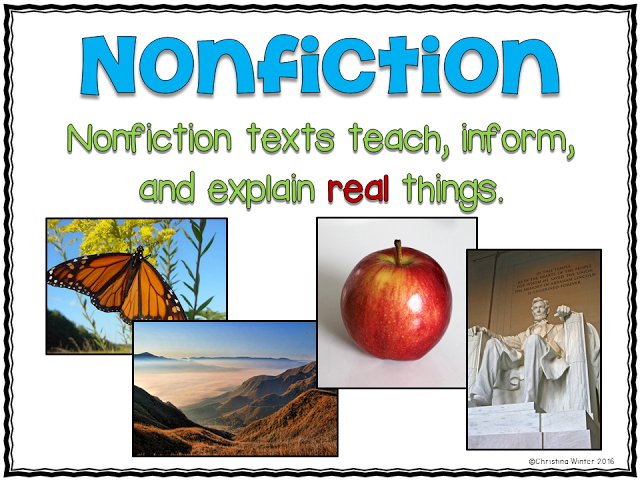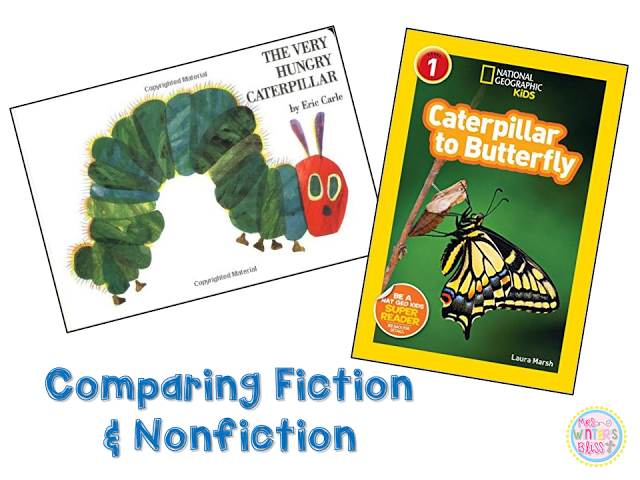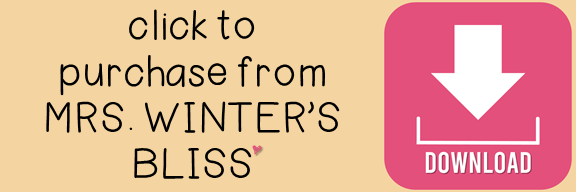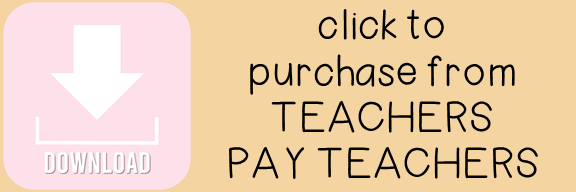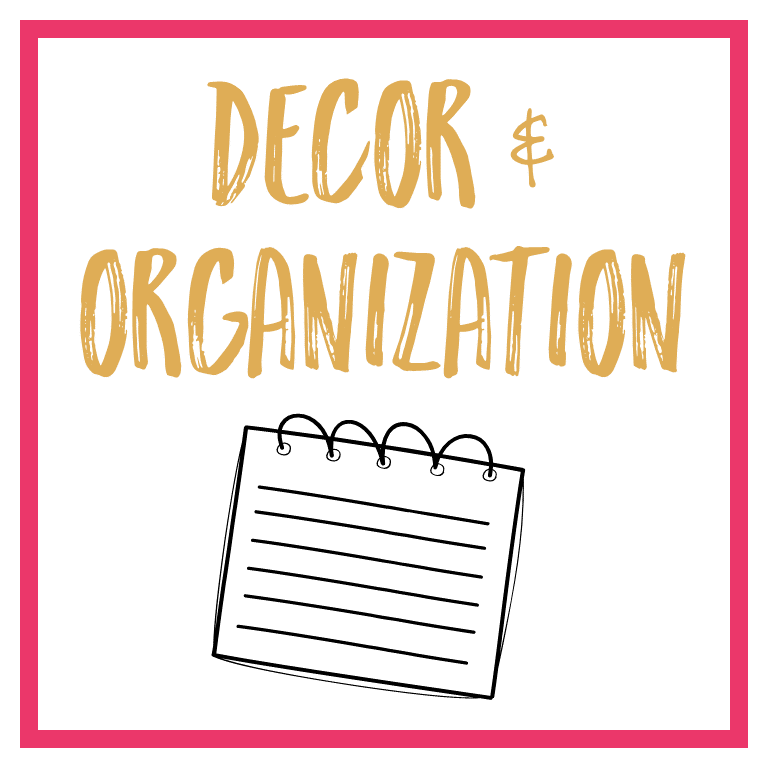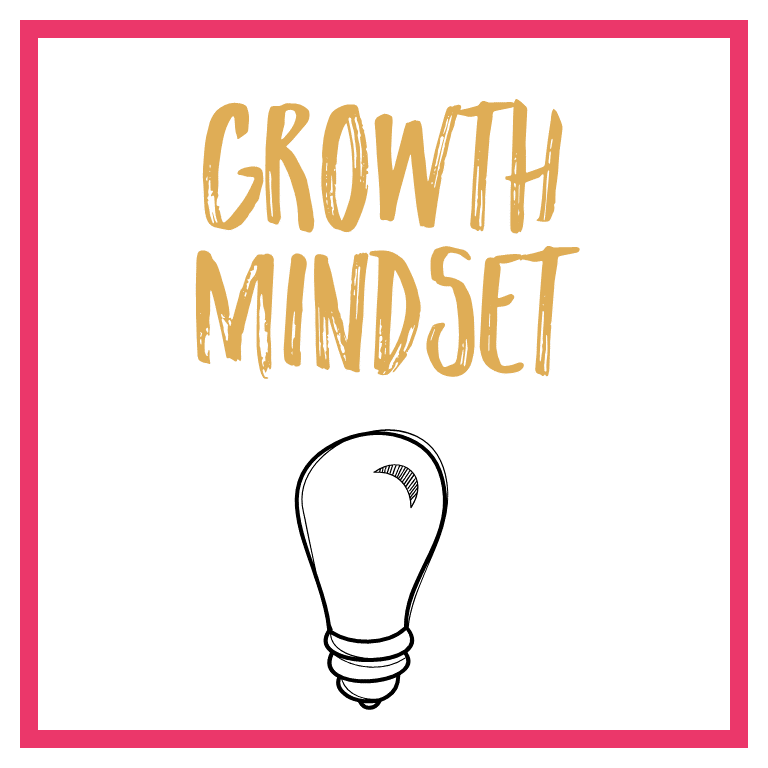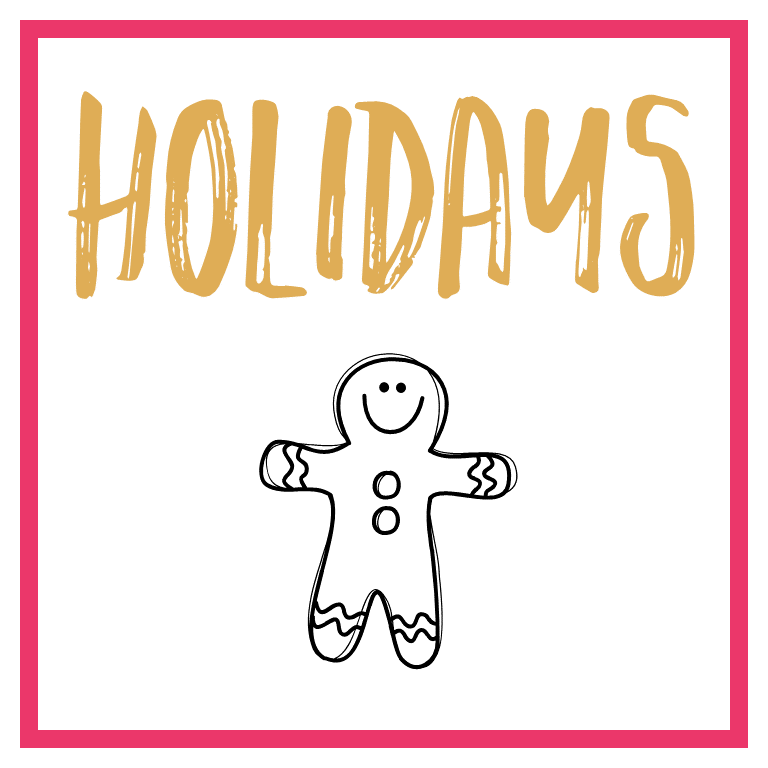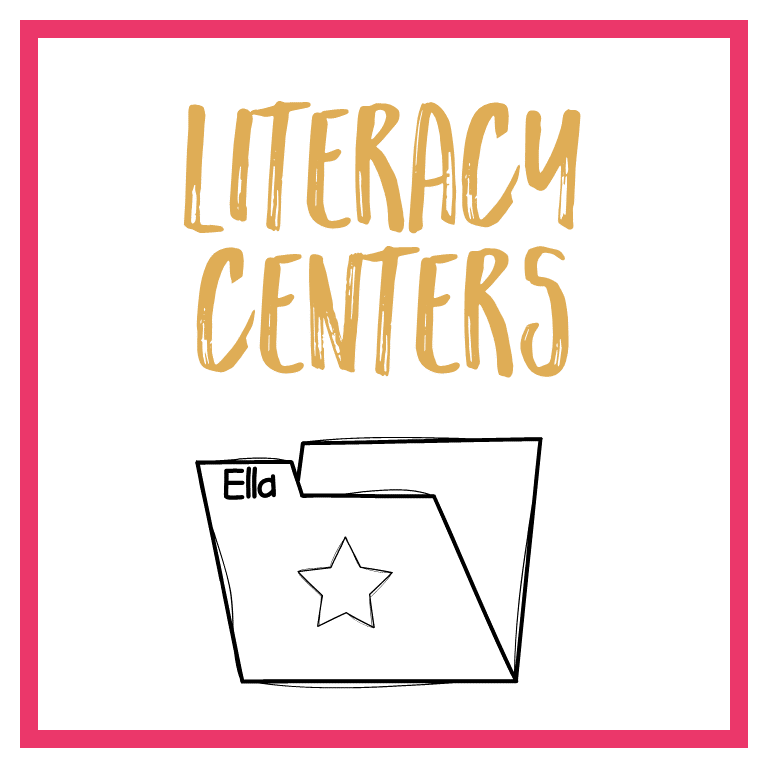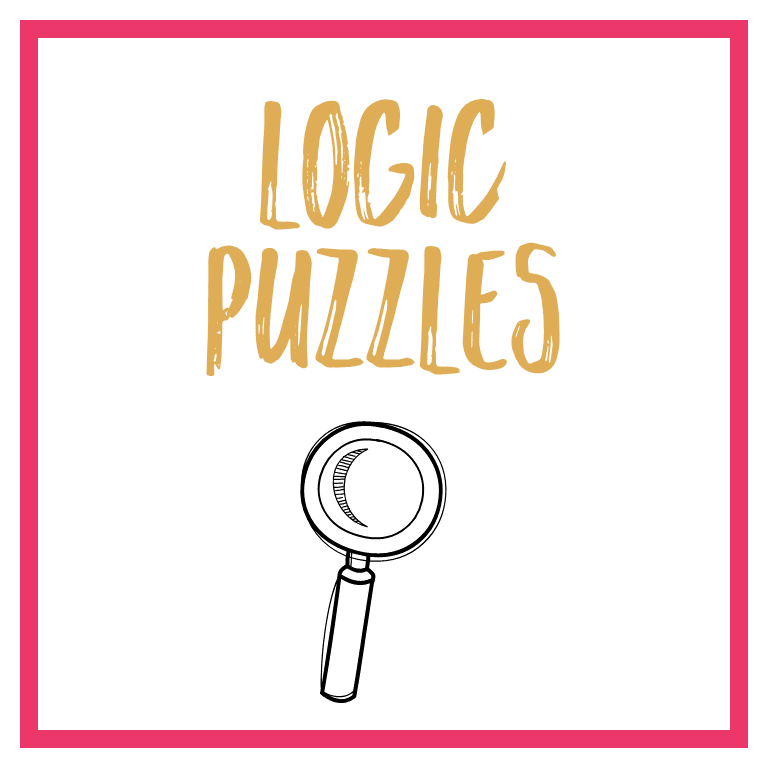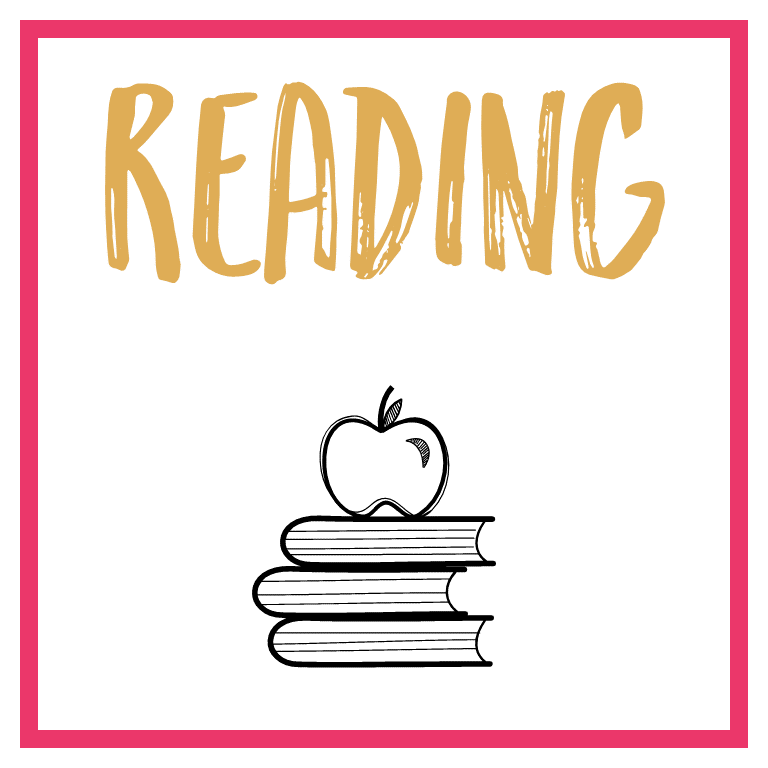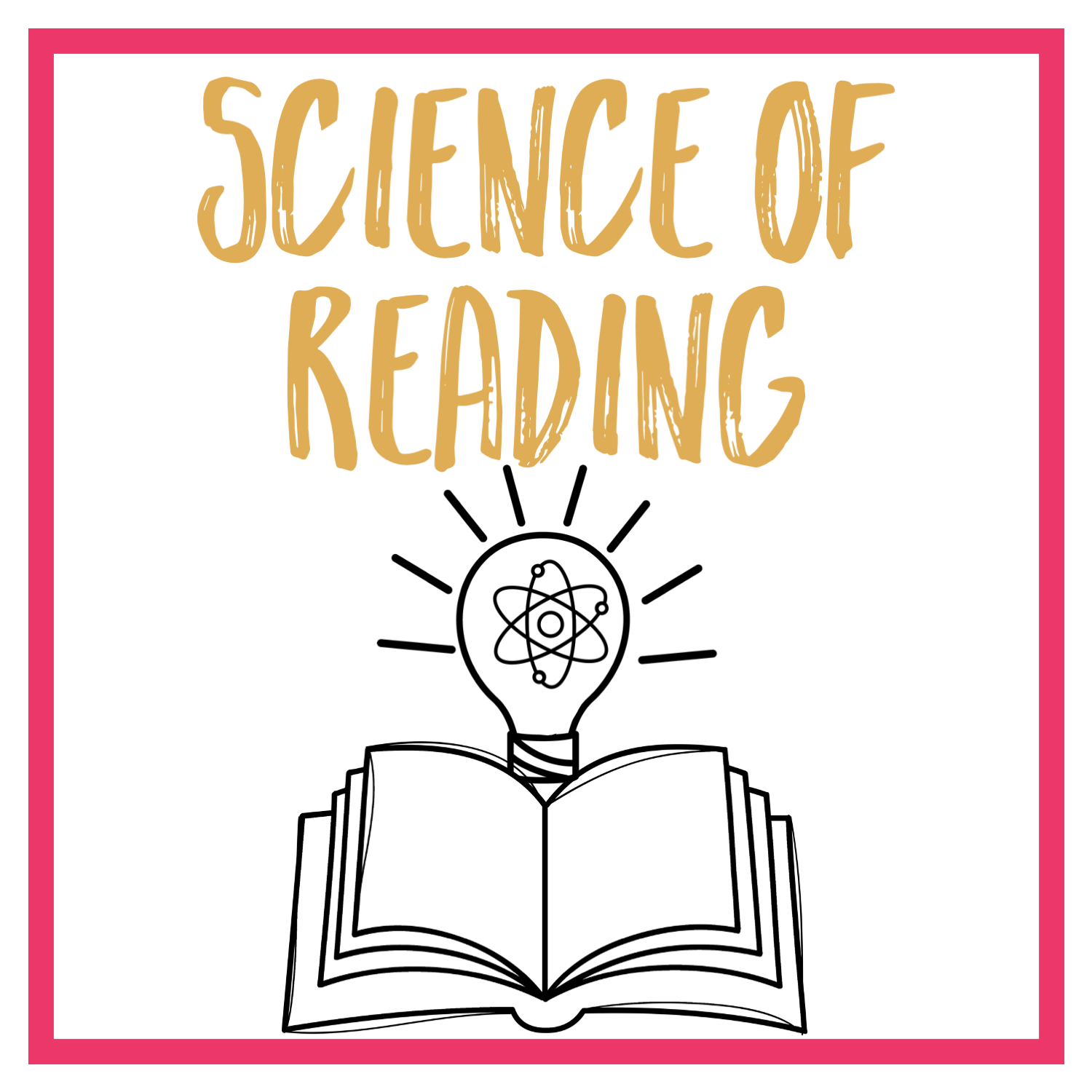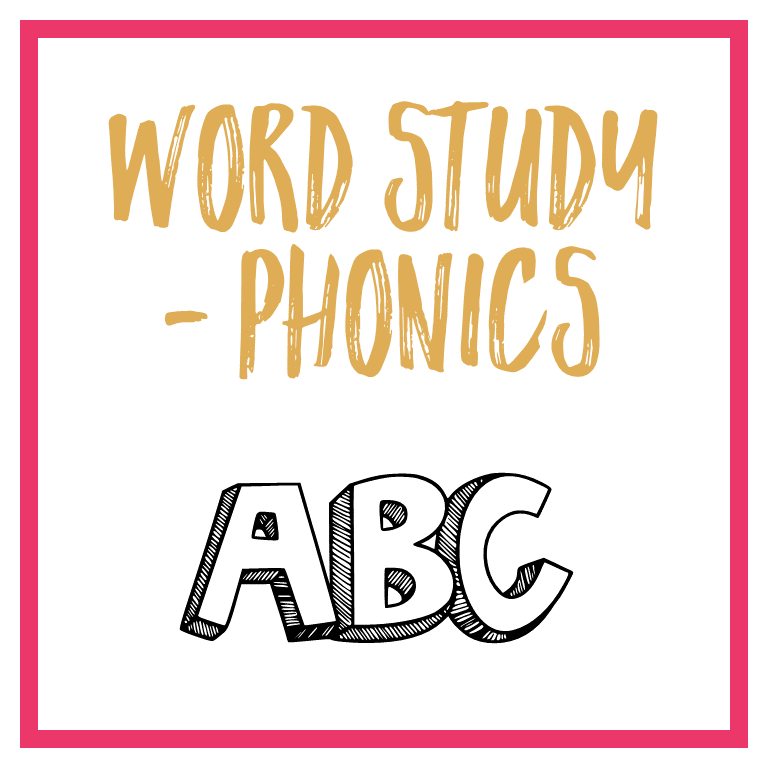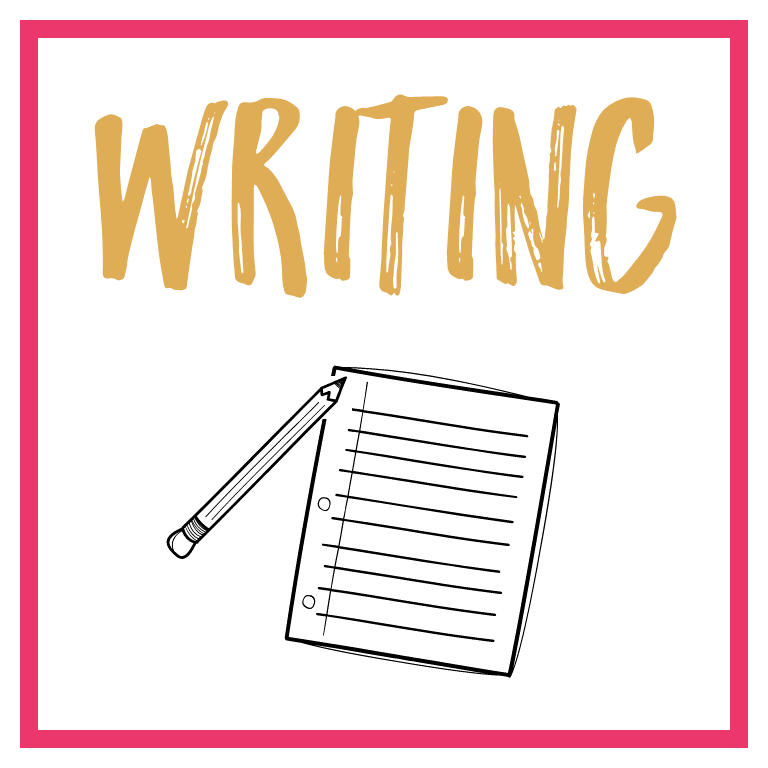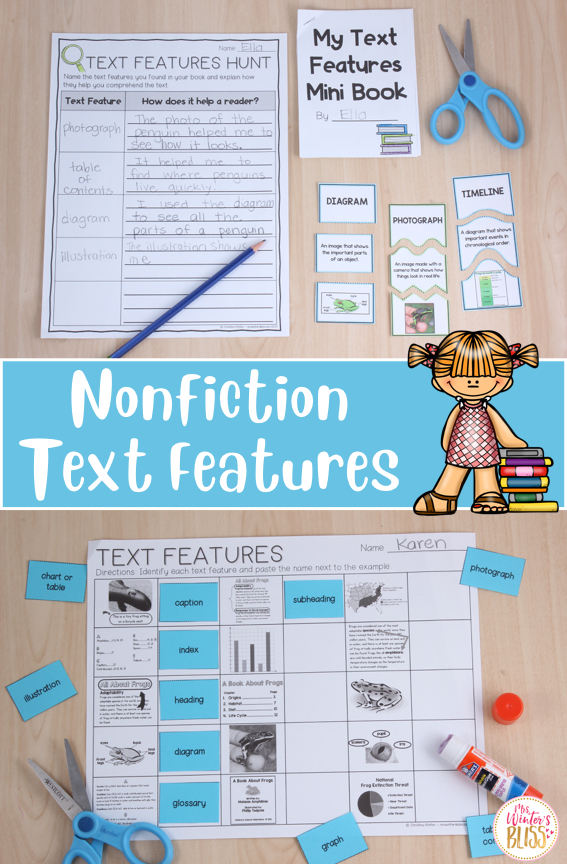
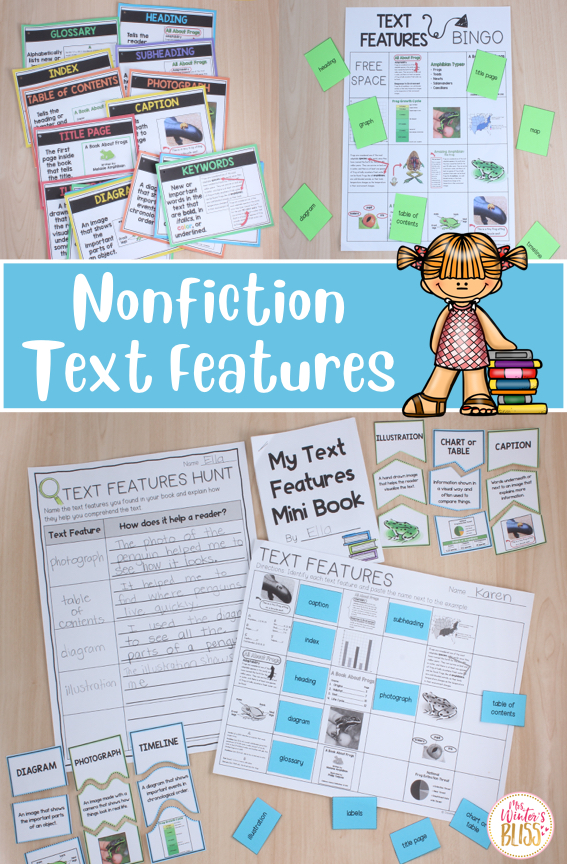
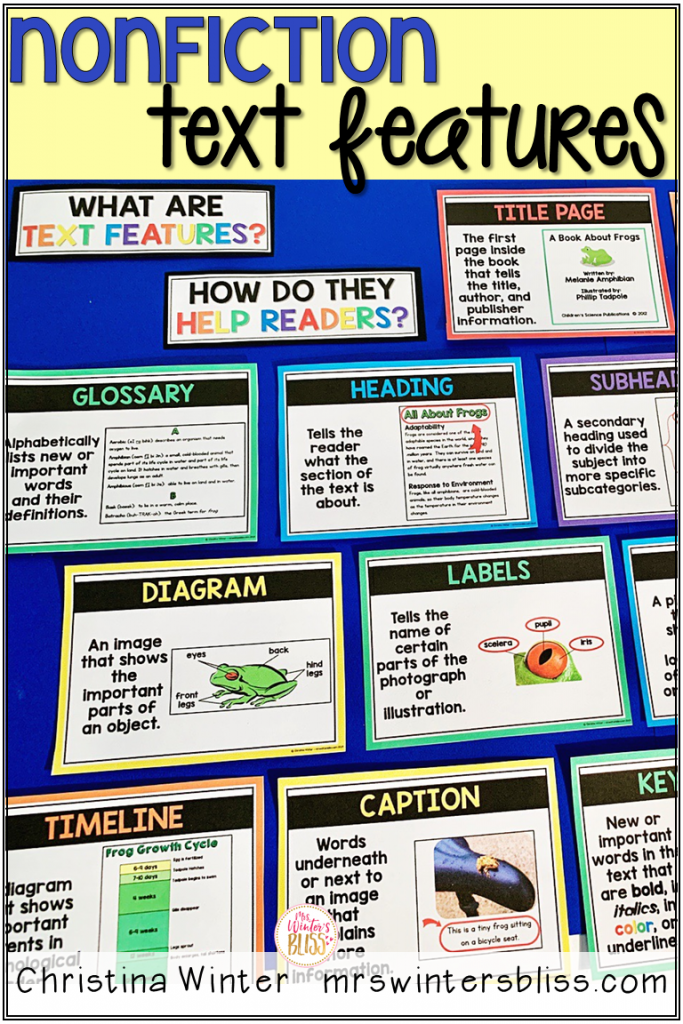
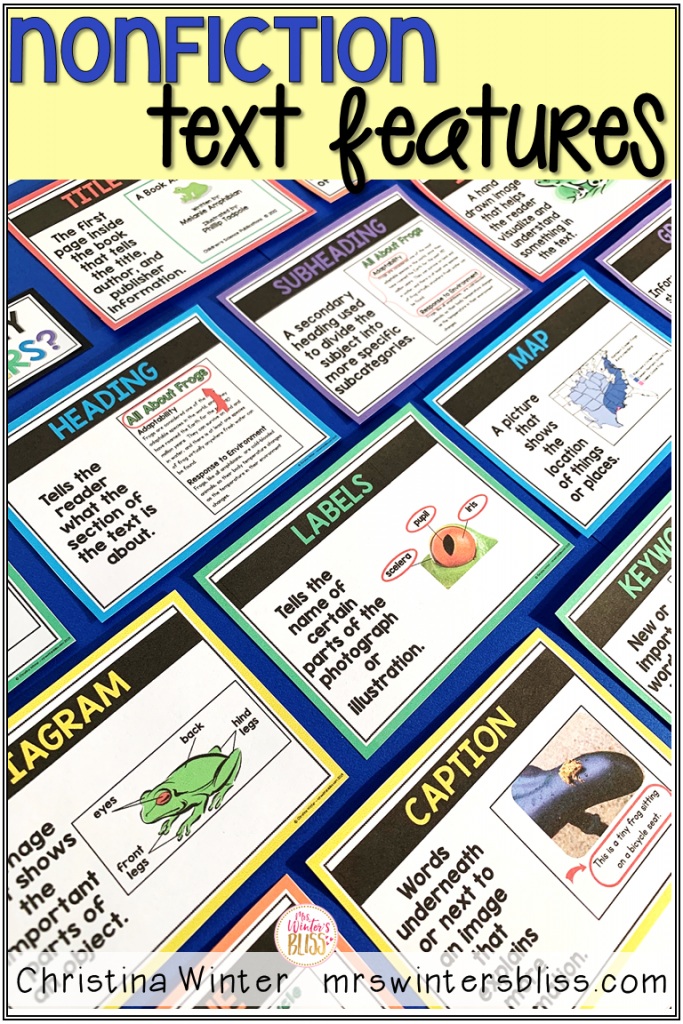
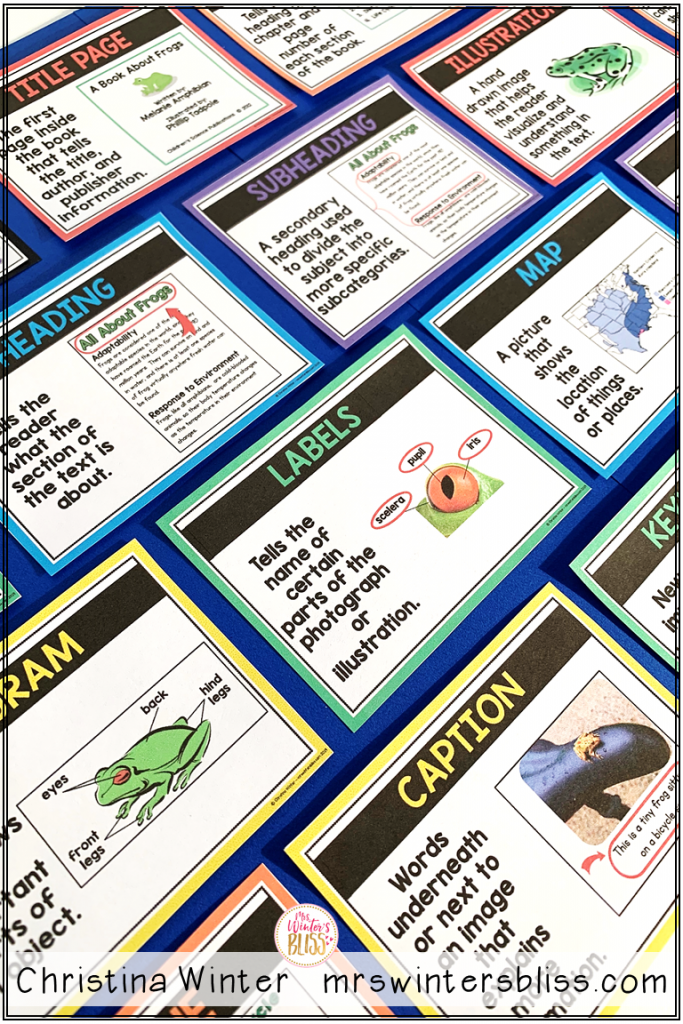
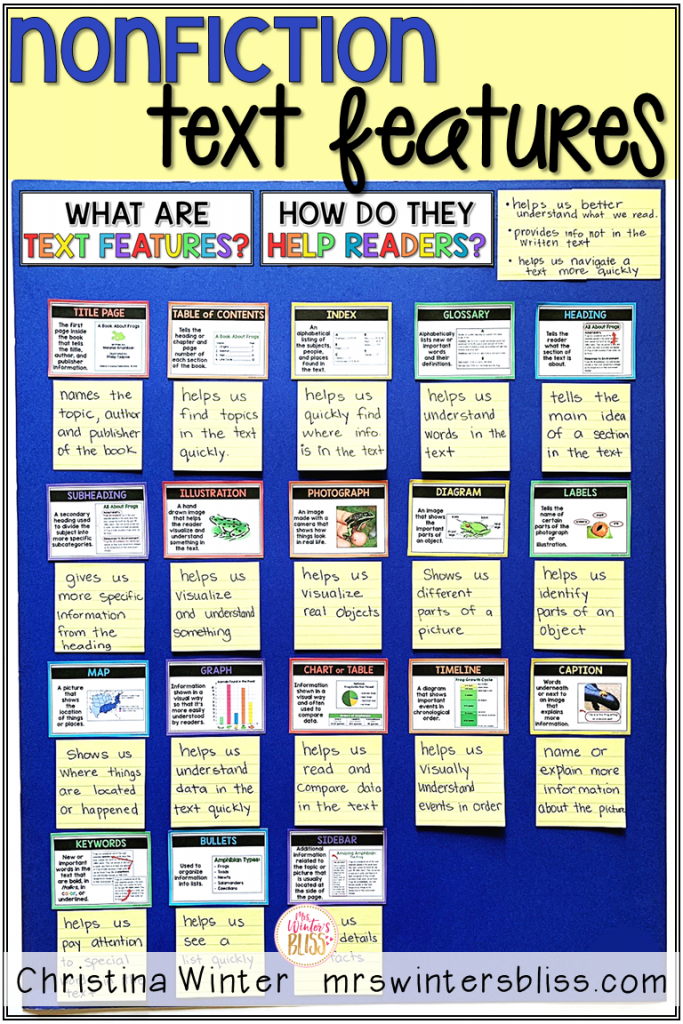
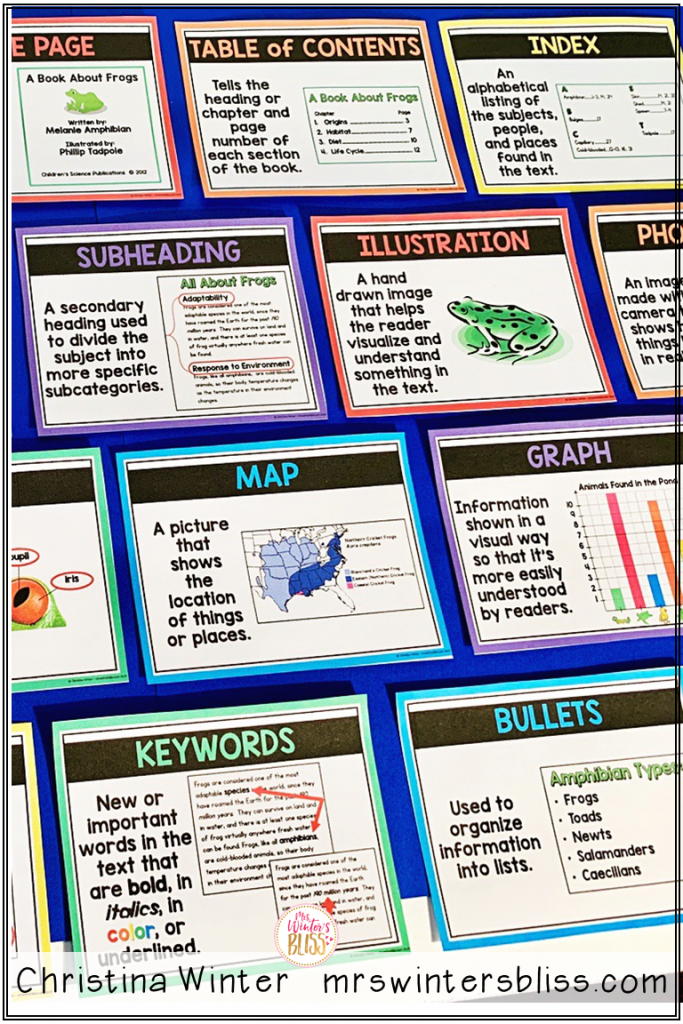
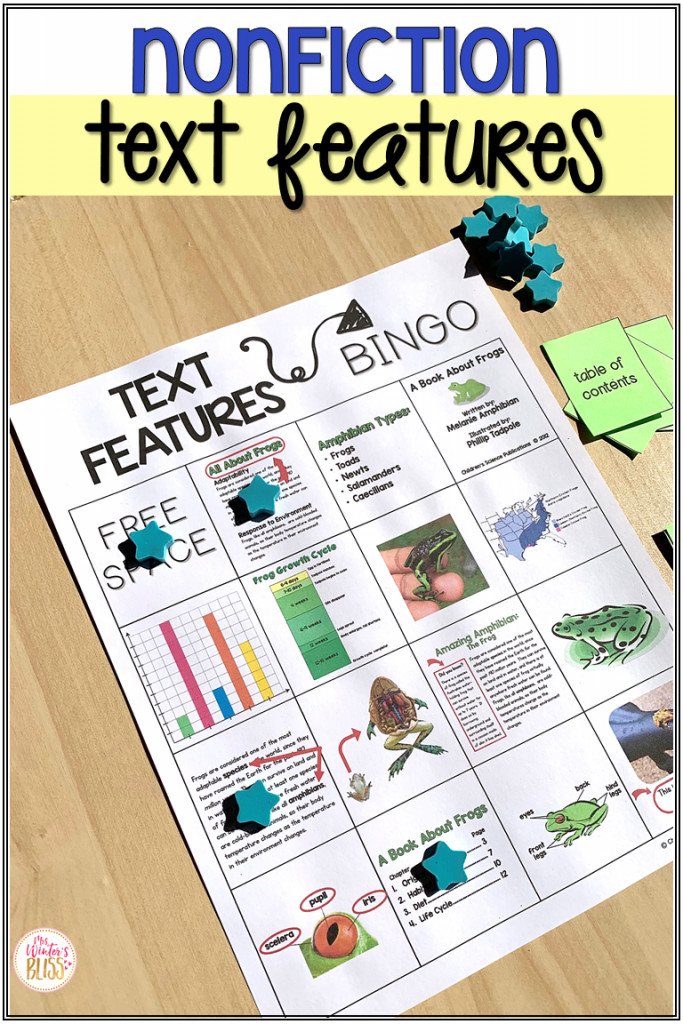
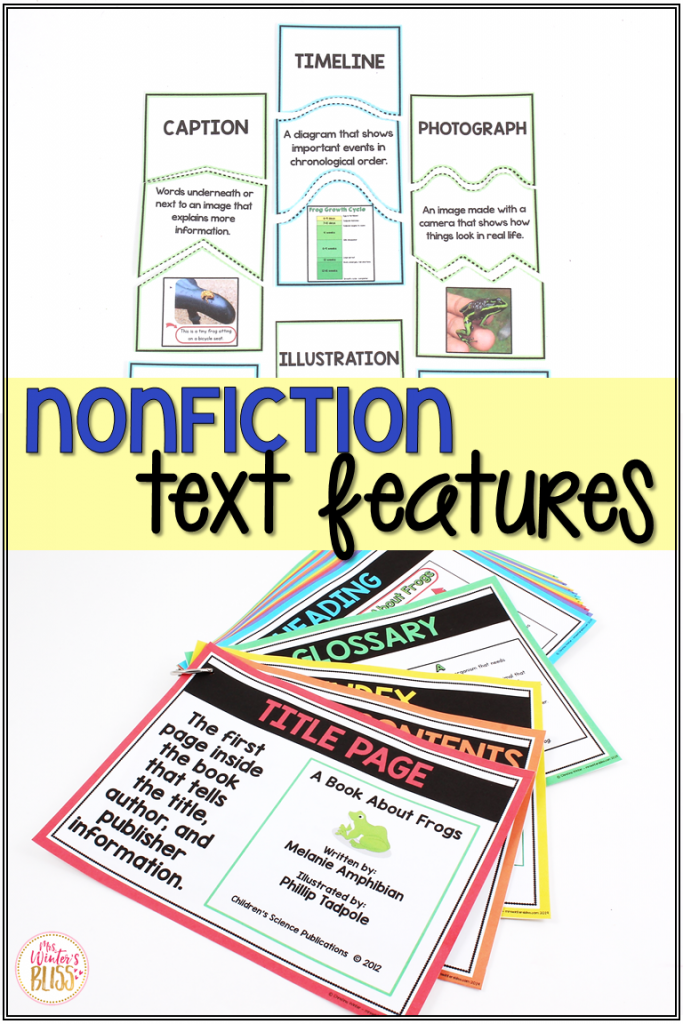

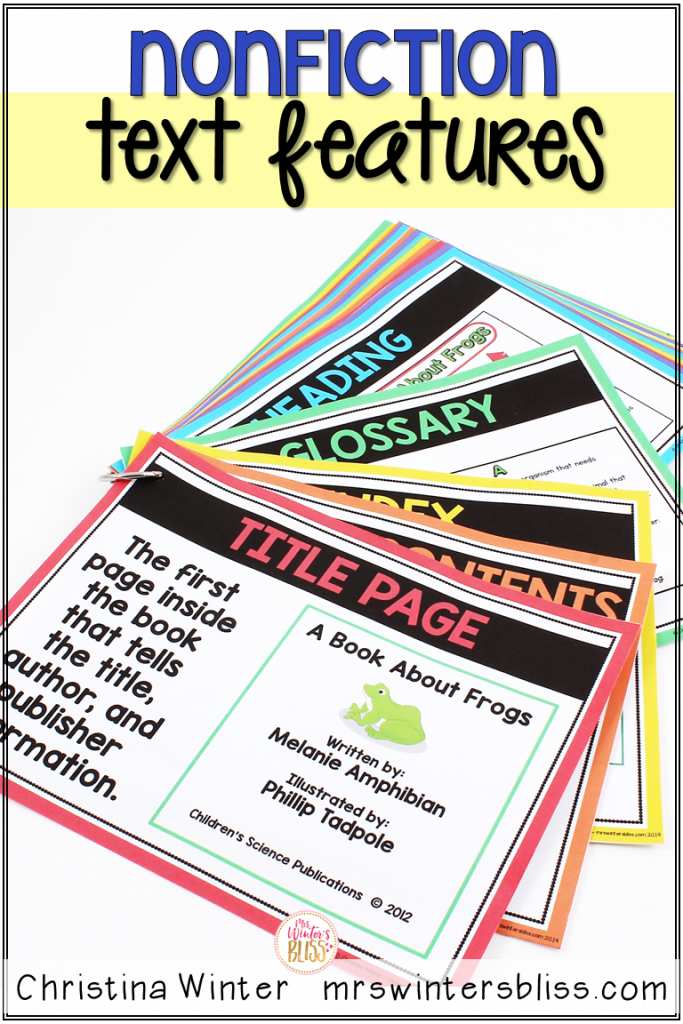
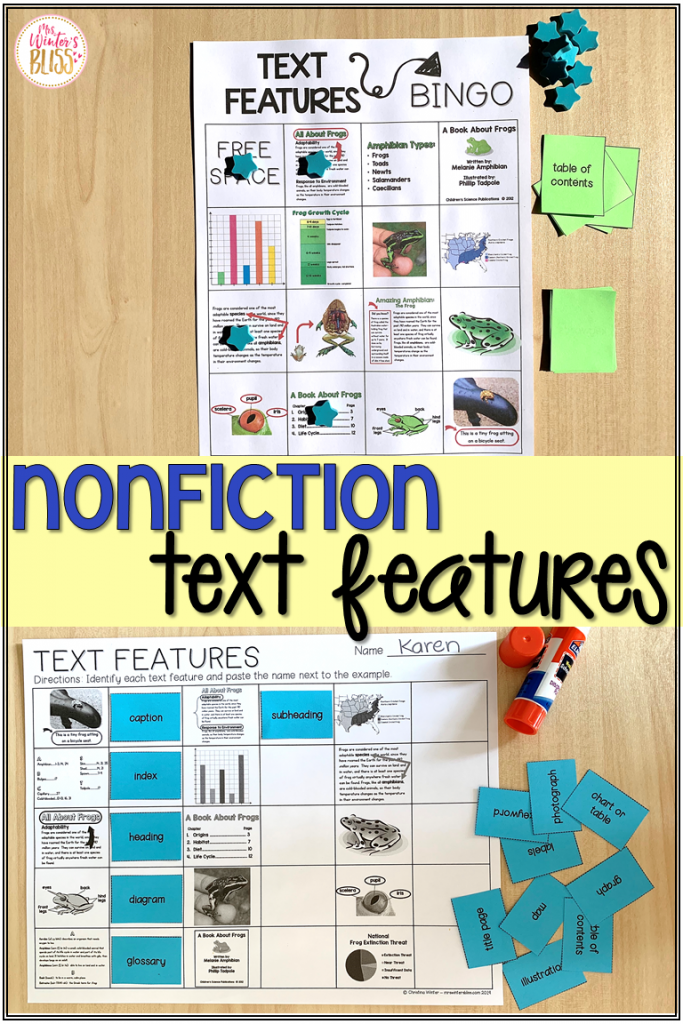
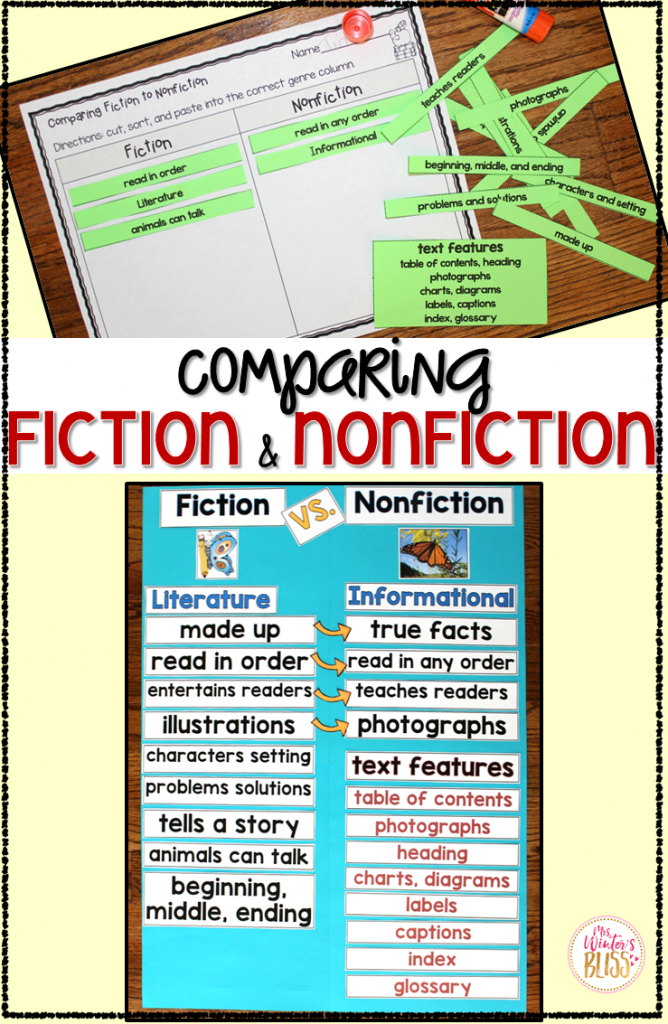
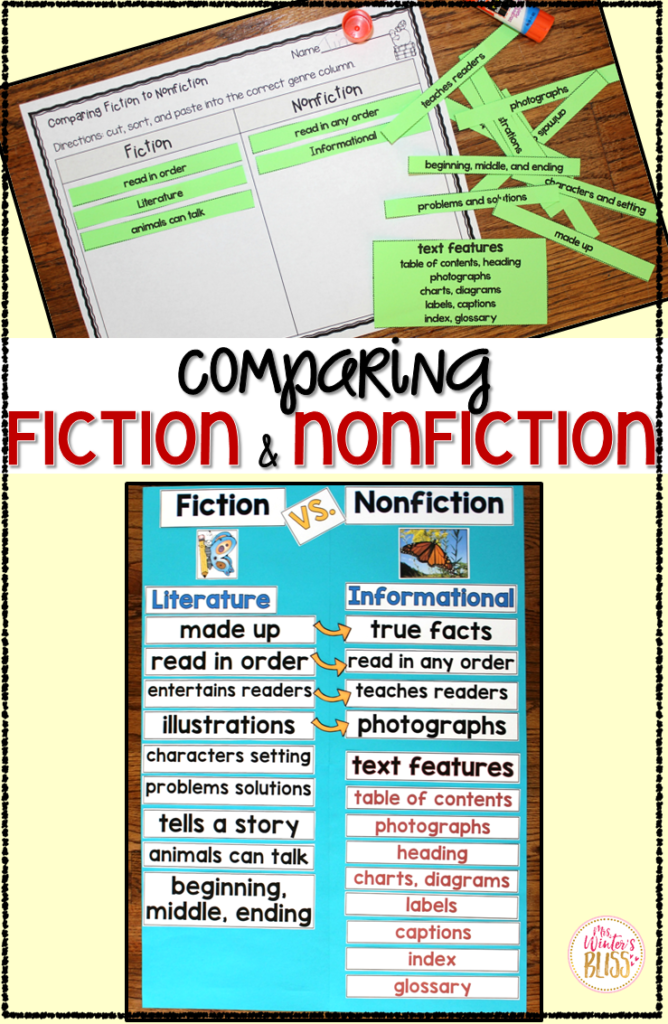
Help students understand the differences between fiction vs nonfiction texts. These teaching ideas & activities are perfect for making an anchor chart as your students are learning to distinguish between fiction and nonfiction.
Hello Friend!
A lot has changed in the classroom since the implementation of the Common Core Standards. While I may not love all of the changes, one shift I do think is positive is the greater emphasis on reading and writing informational texts. In the past, 80% of the texts read in class were fiction. Now, the Common Core Standards aim for reading materials to be 50% fiction and 50% nonfiction.
I love sharing informational texts with my students because it is an easy way for me to connect with them and share in their interests. There is great excitement in the air when together we can learn new information and build our background knowledge.
Today I’m eager to share with you the day-to-day details and resources I used to teach my nonfiction unit! So let’s get started!
How I Teach Fiction Vs. Non-Fiction
I begin the unit I make sure my students understand what makes a text fiction or nonfiction. After modeling how I know, students turn and talk to a partner to explain how they know the text type. I then add these posters to our focus wall.
Videos to Teach Fiction vs. Non-Fiction
These videos are an engaging way to dive into the topic!
Harry Kindergarten is always a favorite!
How to Teach Non-Fiction Text Features
On Day 2 my plan was to teach the features of nonfiction texts. I asked my students, “What are text features?” I looked out and saw blank stares…heard nothing but crickets….But don’t worry, this actually excited me! I love when no one already knows what I am about to teach. 🙂
Prior to this mini lesson I made this anchor chart with just the text features pasted on.
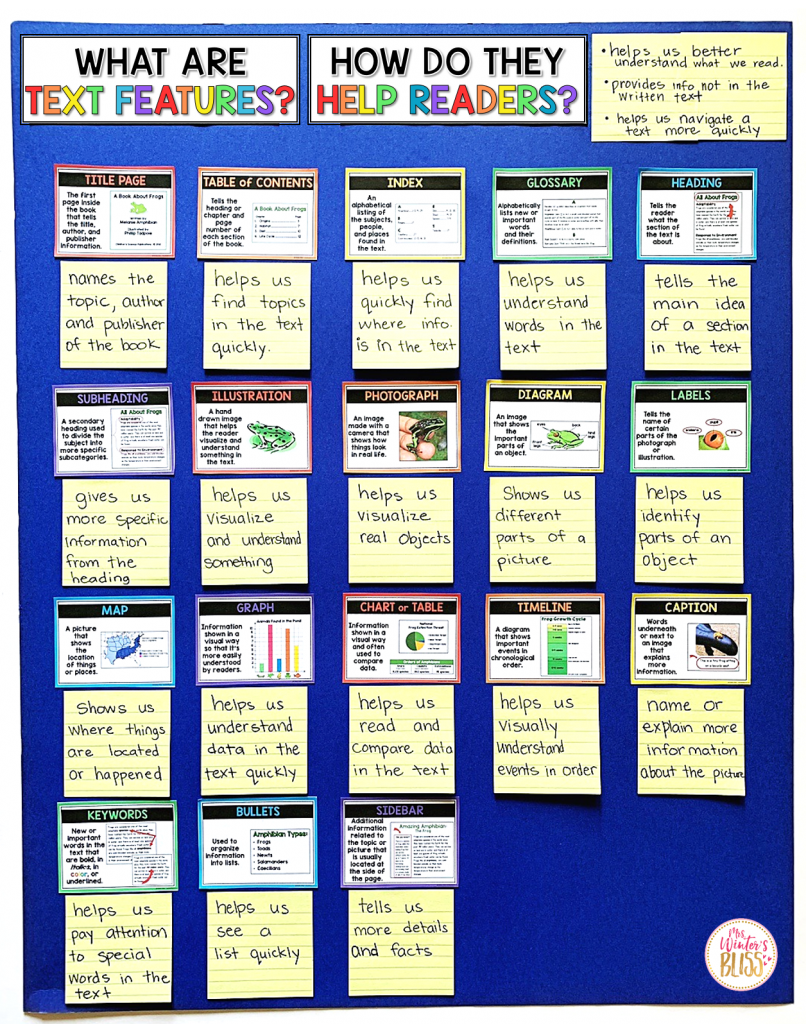
I shrunk the posters down and printed 4 to a page. I did not prewrite the post-its on the poster, instead my students and I created the notes together as we discovered, discussed, and determined each text feature’s purpose.
It took 4 mini lessons to determine what these text features were and to understand how they help us while reading nonfiction texts. I hung our anchor chart in a low space that was accessible to my students while working in the classroom.
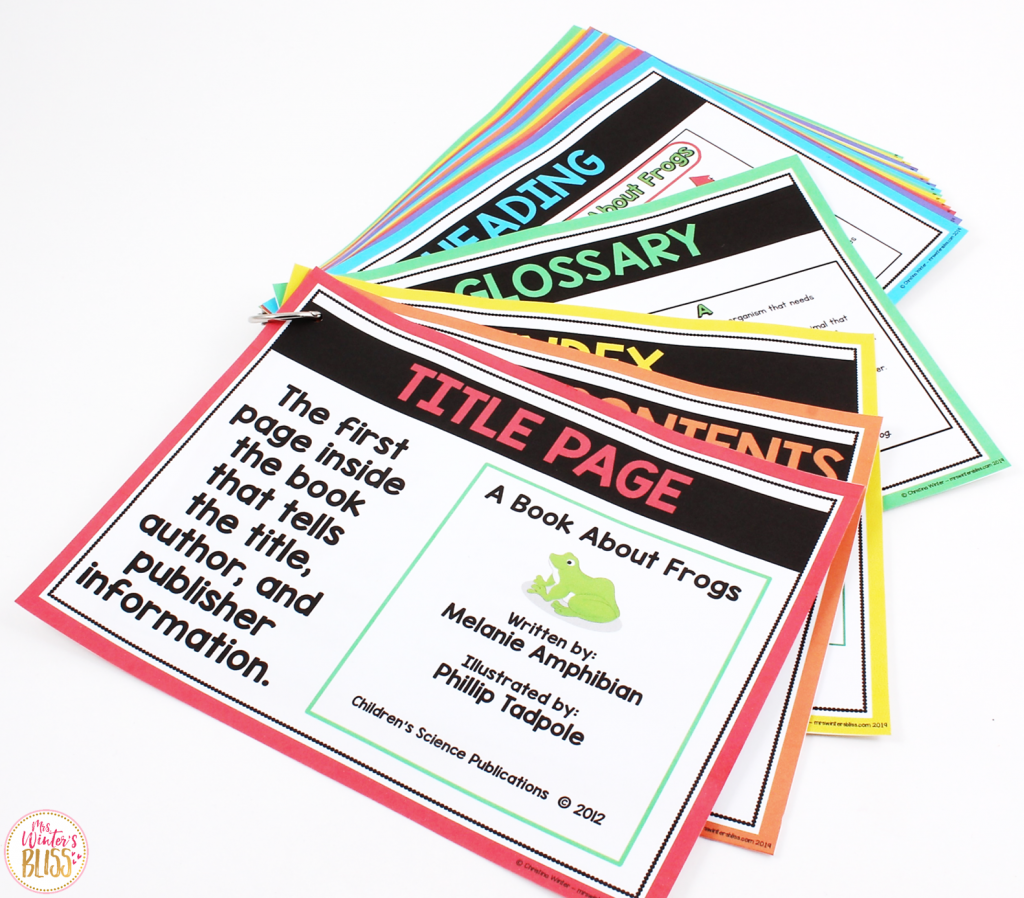
I also printed the text feature posters out and put them on a ring. The ring hung on my whiteboard in the front of my classroom so students could easily access then at anytime.
Comparing Fiction and Non-Fiction
Now that my readers had a good foundation of identifying nonfiction books and text features, we moved on to comparing fiction to nonfiction texts. These two familiar books on butterflies were perfect to use as examples of each text type.
In first grade students must be able to explain major differences between fiction and nonfiction texts. To support them I premade the beginning of our anchor chart to compare texts. As my students discovered the differences between the butterfly texts, we filled out the chart together.
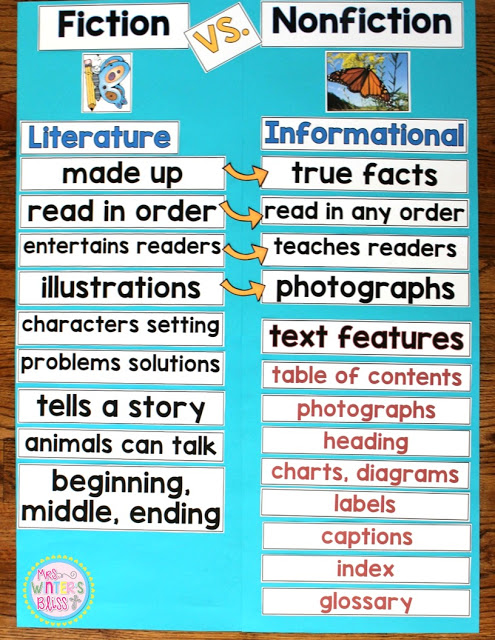 |
| Get these FICTION VS NONFICTION printables here |
Later they sorted the attributes on their own chart.
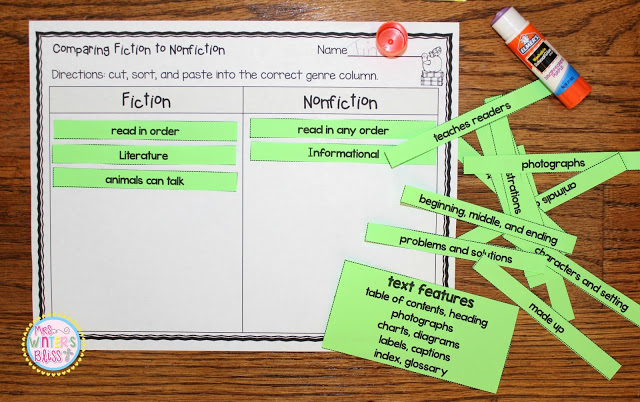
I used this printable in a literacy center. It also served as a great resource for having them share their thinking with a partner.

This printable made a good assessment that I shared with parents at conferences.
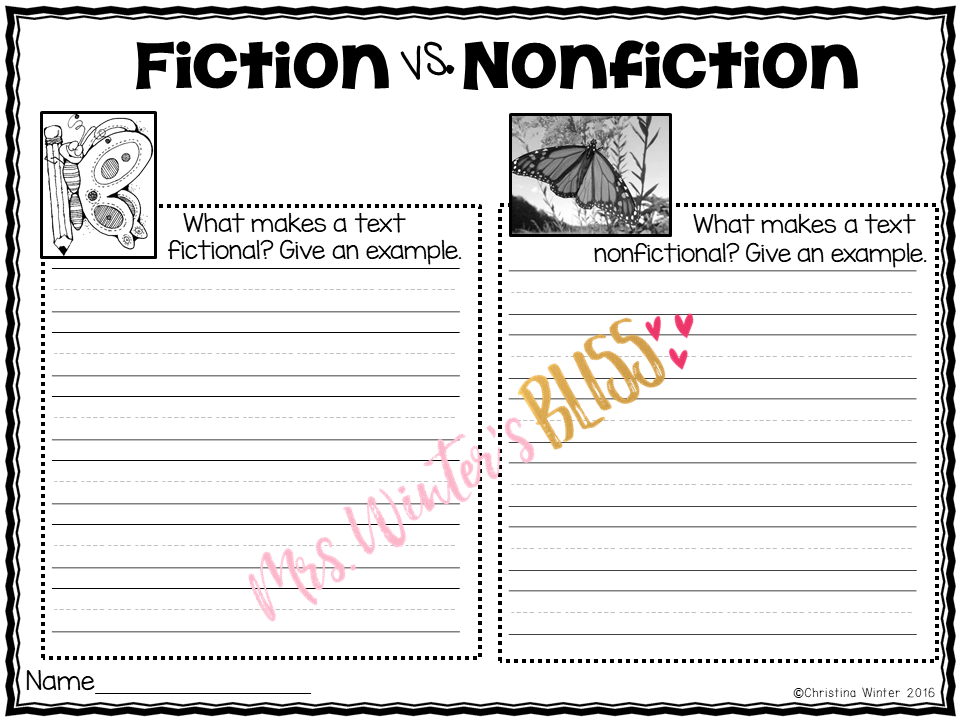
I recognize prepping these materials can take A LOT of time! That’s why I’ve created resources to help you. These three resources for teaching about non-fiction are ready to print and teach! Grab them below!
-
Sale Product on sale
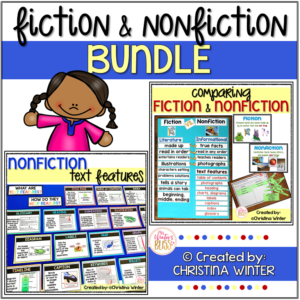 Fiction and Nonfiction Activities BundleEarn 0 Reward Points
Fiction and Nonfiction Activities BundleEarn 0 Reward Points$8.75Original price was: $8.75.$7.00Current price is: $7.00. -
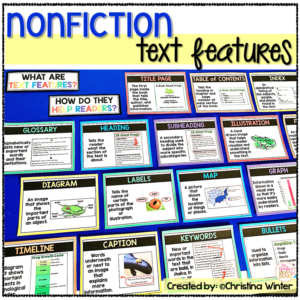 Nonfiction Text Features – anchor chart posters & worksheetsEarn 0 Reward Points
Nonfiction Text Features – anchor chart posters & worksheetsEarn 0 Reward Points
$5.00Rated 5.00 out of 5 based on 1 customer rating -
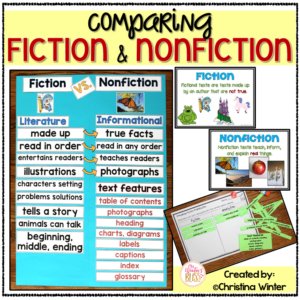 Comparing Fiction and NonfictionEarn 0 Reward Points
Comparing Fiction and NonfictionEarn 0 Reward Points
$3.75Rated 5.00 out of 5 based on 1 customer rating
Looking for more ways to teach your students about informational texts? Take a look at this post where I share 5 tips for How to Teach Informative Writing and provide details about the Informational Writing Mini-Unit resources I have created for Kindergarten, 1st and 2nd grade students.
Learning about informational texts is so important for our students. I hope these resources will help make it fun and easy for you to teach your students about the genre. When we give our students plenty of opportunities to read and write non-fiction in their younger years, we are setting them to successfully tackle the content-specific texts they will encounter in their later years!
Thanks for reading,



